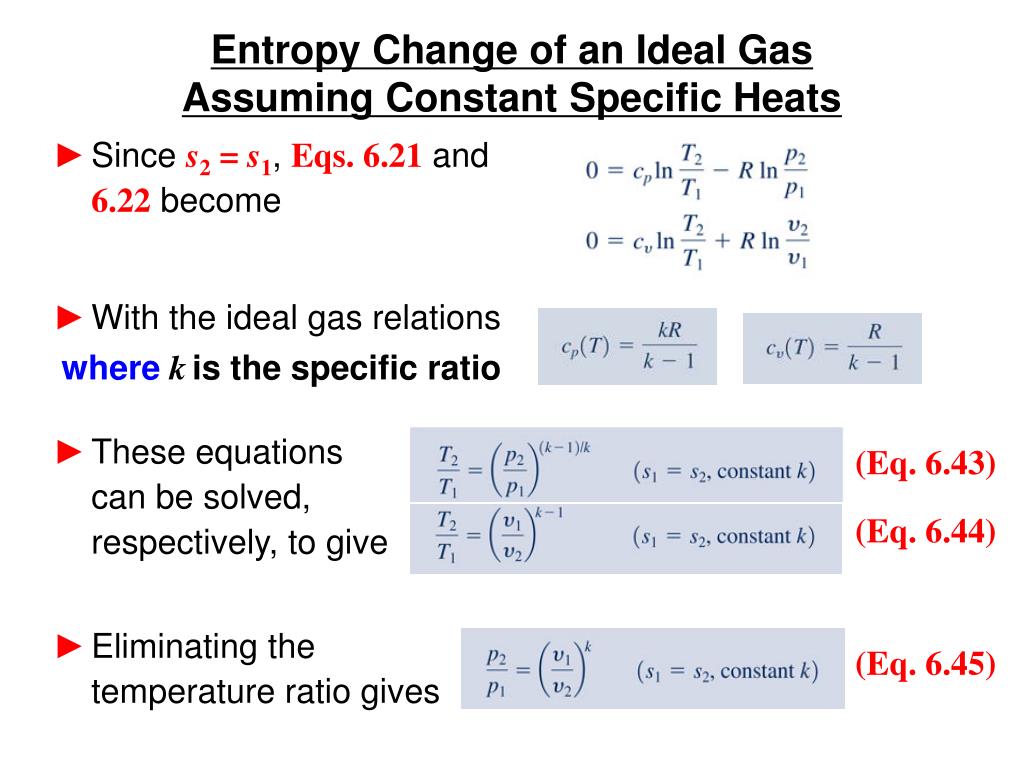

You will find examples on pages 260 to the top of page 262, and in problems 15 and 16 in the end-of-chapter questions. There are lots in my calculations book if you have a copy. That's because there is a decrease in the total number of gas molecules present.Īnd that is all there is to it! You will, of course, need to practise doing this until you are completely confident, but you will need to find your own examples. Using the equation of state of the ideal gas, on the ends of the isotherm one has. The entropy has decreased - as we predicted it would in the earlier page. You have to consider the total change in entropy of the working fluid and the reservoirs together.
-524.png)
Total entropy at the end = 214 + 2(69.9) = 353.8 J K -1mol -1Įntropy change = what you end up with - what you started with.Įntropy change = 353.8 - 596 = -242.2 J K -1mol -1 You ended up with 1 mole of carbon dioxide and two moles of liquid water. You started with 1 mole of methane and 2 moles of oxygen. In the introductory page we looked at the following reaction and worked out that there would be a decrease in entropy. Where Σ (sigma) simply means "the sum of".

Change in entropy = what you end up with - what you started with You add up the entropies for everything you end up with, and take away the entropies of everything you started with. Working out entropy changes for a reaction is very easy. In an exam, you will be given values for all the standard entropies you need. The entropy change of the surroundings can be calculated by the equation dSsur dq Tsur d S s u r d q T s u r regardless of the path (irreversible or reversible). The thing you must be most careful about is the fact that entropy is measured in joules, not kilojoules, unlike most of the other energy terms you will have come across. Use whatever units the examiners give you. 1 bar is 100 kPa 1 atmosphere is 101.325 kPa. Don't worry about it - they are nearly the same. Qualitatively, entropy is simply a measure how much the energy of atoms and molecules become more spread out in a process and can be defined in terms of statistical probabilities of a system or in terms of the other thermodynamic. You might find the pressure quoted as 1 atmosphere rather than 1 bar in less recent sources. Entropy is a state function that is often erroneously referred to as the state of disorder of a system. If your syllabus doesn't mention all these different sorts, just ignore this comment.Įntropy is given the symbol S, and standard entropy (measured at 298 K and a pressure of 1 bar) is given the symbol S°. Entropy change to the surroundings and the total entropy change are dealt with on another page. This page deals only with entropy changes to the system. Note: If you haven't already read the page about introducing entropy, you should do so before you go on. In this case, the reaction is highly exothermic, and the drive towards a decrease in energy allows the reaction to occur.This page looks at how you can calculate entropy changes during reactions from given values of entropy for each of the substances taking part. According to the drive towards higher entropy, the formation of water from hydrogen and oxygen is an unfavorable reaction. The entropy change for this reaction is highly negative because three gaseous molecules are being converted into two liquid molecules.


 0 kommentar(er)
0 kommentar(er)
